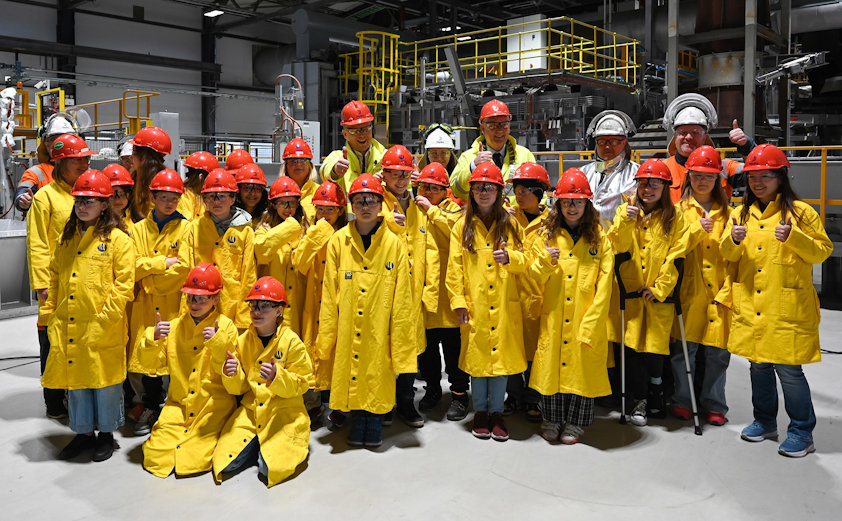Hydro has invested NOK 240 million in the purpose built recycling facility, located near the primary aluminium plant in Høyanger. The recycled aluminium will be used to lower the carbon footprint of Hydro’s casting products even further. The facility is the first if its kind in Norway with an annual capacity to process 36,000 tonnes of post-consumer aluminium scrap.
“Recycling is the fastest way to zero. With this new facility, we deliver on our strategy to increase recycling capacity in our efforts to decarbonize our own production processes and make products that the world needs for the green transition,” says Eivind Kallevik, Executive Vice President of Hydro Aluminium Metal.
At the new facility, aluminium scrap, originating from vehicles, building facades, furniture, packaging, and other kinds of consumer goods, is de-coated before being melted into ingots. The recycled aluminium is then mixed with primary metal, made with renewable hydropower, to make low-carbon casting products that enable customers to cut the embedded emissions in their value chain.
“The outlook for the aluminium market in Europe is promising as we move towards the green transition, but in times of turmoil, customers need stable and predictable partners in their decarbonization efforts. With this and other long-term investments at our aluminium plants, we are gearing up to change the game for aluminium production and stand ready to deliver low-carbon aluminium in the decades to come,” says Kallevik.

Hydro aims to become a net-zero producer of aluminium by 2050, and is on track to achieve a 30 percent reduction in emissions by 2030 compared to 2018 levels. Aluminium recycling is one of the main pathways of Hydro’s decarbonization strategy.
In addition to recycling of post-consumer aluminium scrap, Hydro is working towards full decarbonization by introducing new technologies such as carbon capture and storage, as well as developing emission-free primary aluminium production.
- By 2050, Hydro aims to become a climate-neutral company that produces climate-neutral products for a climate-neutral society. By investing in new technology and increasing recycling, the company will achieve its goal of reducing its own greenhouse gas emissions by 10 percent by 2025 and 30 percent by 2030, compared to 2018 levels.
- Full decarbonization will be achieved by recycling more used aluminium in combination with the adoption of new technologies. This includes carbon capture and storage, the use of hydrogen and biogas as energy sources, and in addition, new, proprietary technology that has the potential to eliminate greenhouse gas emissions from primary aluminium production.
- By combining hydropower as an energy source, modern production technology and recycling of scrap, Hydro Årdal can deliver Hydro REDUXA 3.0 with a carbon footprint of less than 3 kg CO2 per kg aluminum. This is around 80 percent lower than the global average.
Learn more about Hydro’s roadmap to zero emission aluminium production.
Published: April 19, 2024

